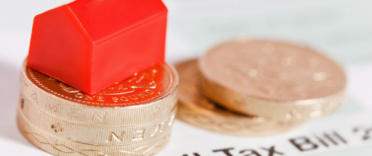
Nearly a third of council tax challenges for 2023/24 in England and Wales resulted in a reduction to the Council Tax band according to the latest data by the Valuation Office Agency (VOA).
Of the 39,500 resolved challenges this year, 65% resulted in no change to the Council Tax band, 27% resulted in a reduction to the Council Tax band and less than 1% resulted in an increase to the Council Tax band. This means that about a third of applicants will likely see a reduction in their Council Tax bill moving forward.
The number of received challenges this year stands at 43,820 which is down from 51,300 in 2022/2023. Approximately 39,500 challenges were resolved this year representing a downward trend from last year when more than 56,000 were resolved.
One of the fears of challenging a council tax band is the potential for the council to place you in a higher band, meaning you could pay more. To make things worse, it could result in the council increasing the council tax for everyone in your street, but as the recent stats show, it is incredibly unlikely.
How to challenge your council tax band
Below, we outline the process you need to follow to challenge your council tax band.
Step 1 - Do your research
Firstly, you need to know what band you are currently in. You can check this by looking at your latest council tax bill or by visiting the "council tax band" site provided by the government. If you use the website, you should be able to see the band that your neighbours are in too. Your council tax bill is based loosely on the value of your property, but the system that is used is complex and outdated.
Council tax was originally introduced in the early 90's and properties were placed into "valuation bands" based on property prices at the time. Many properties were either not placed in the correct band at the time, have not been re-valued since (and should have been), or were built after the banding system was introduced. It is entirely possible that you could be in the wrong valuation band, meaning you are paying too much council tax, and maybe even paying more than your neighbours.
Step 2 - Do a valuation check
The next stage is to do a valuation check.
If you bought your house around 1991 (in England) and 2003 (in Wales), then you can simply use the price you paid and the date you bought the property to do the valuation check. If this isn't possible, then try and find similar properties that have sold in your area - using sites like Zoopla or Rightmove - and note down the sale price and date. If you rent, you will need to do some research and see if you can find evidence of the property being sold or similar properties in your area and use those figures for the valuation check. You could also use an online valuation tool as well.
Once you have this figure, you can compare it to the original tax banding that was introduced in 1991 (or 2003 in Wales), to see if your current council tax band matches. If you are currently in a lower band, then it is likely that your challenge will be rejected (and you could even be placed in a higher band). However, if you are currently in a higher band, it is possible that your challenge could be successful and it might be worth pursuing a challenge.
You can't use a valuation on average house prices as evidence, but being aware of your home's rough valuation is helpful before making a challenge.
| Band | England - Value as of 1st April 1991 | Wales - Value as of April 1, 2003 |
| A | Up to £40,000 | Up to £44,000 |
| B | £40,001 to £52,000 | £44,000 to £65,000 |
| C | £52,001 to £68,000 | £65,000 to £91,000 |
| D | £68,001 to £88,000 | £91,000 to £123,000 |
| E | £88,001 to £120,000 | £123,000 to £162,000 |
| F | £120,001 to £160,000 | £162,000 to £223,000 |
| G | £160,001 to £320,000 | £223,000 to £324,000 |
| H | More than £320,000 | £324,000 to £424,000 |
| I | N/A | More than £424,000 |
Step 3 - Submit your appeal
To challenge your council tax bill in England and Wales, you'll need to submit your challenge via the Valuation Office Agency (VOA). Typically, you can challenge your band by proposing a new band, particularly if there's been a change to the property (i.e. if it's been demolished or split into multiple properties). Additionally, you could potentially challenge your council tax band if your property's use has changed (for instance, if part of it is now used for business) or if your local area has changed (for instance, a supermarket has been built nearby).
You can also challenge your council tax band if you think it's wrong even if there haven't been any changes. You might need to provide supporting evidence which could include showing that there are properties which are similar to yours but in lower tax bands. Other evidence can include prices that your property (or similar properties) sold for between April 1, 1989, to March 31, 1993, if your property is in England and April 1, 2001, and March 31, 2005, if your property is in Wales.
Once you have gathered your evidence, you can submit your council tax challenge online or call or email the Valuation Office Agency directly. You must continue paying your council tax at its current level while awaiting confirmation.
Things to be aware of before you appeal
Make sure you do your research because if you get your figures wrong, you could find yourself being put into a higher band, meaning that rather than cutting your council tax bill, you end up paying more. Your challenge could affect your neighbours too, particularly if there is an increase, so be sure that you have a strong case before you make your challenge. It's unlikely that your council tax band will go up, as this affects less than 1% of applications, but it's still worth gathering your evidence carefully before submitting your application.
What are your other options?
If you are unable to appeal your council tax band or are unsuccessful, there may be other ways to reduce your council tax bill. Our article "What to do if you are struggling to pay your council tax" explains the various discounts and exemptions you may be entitled to.






